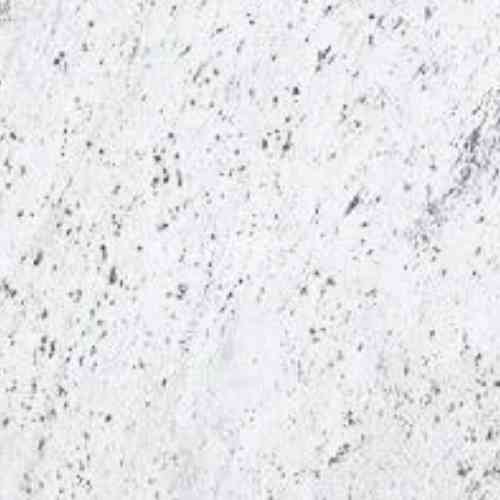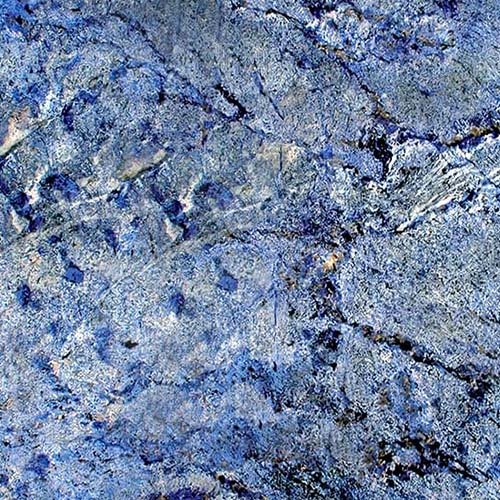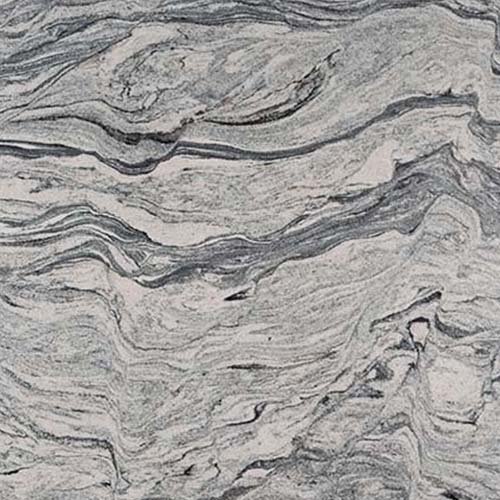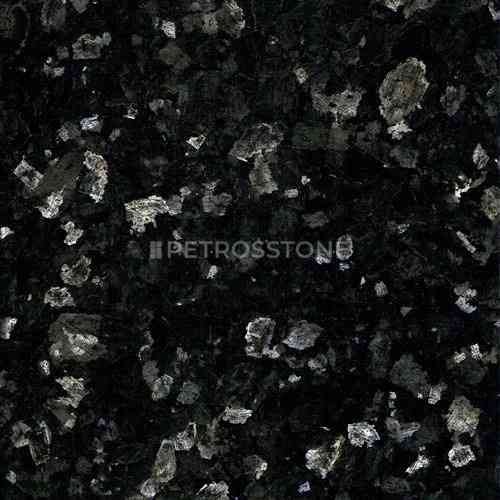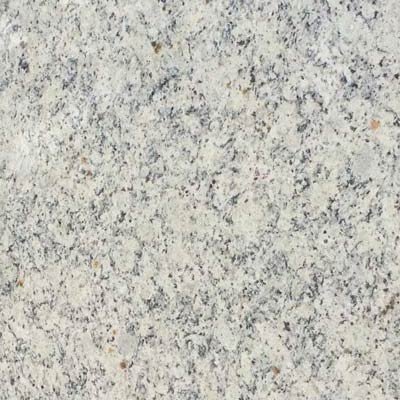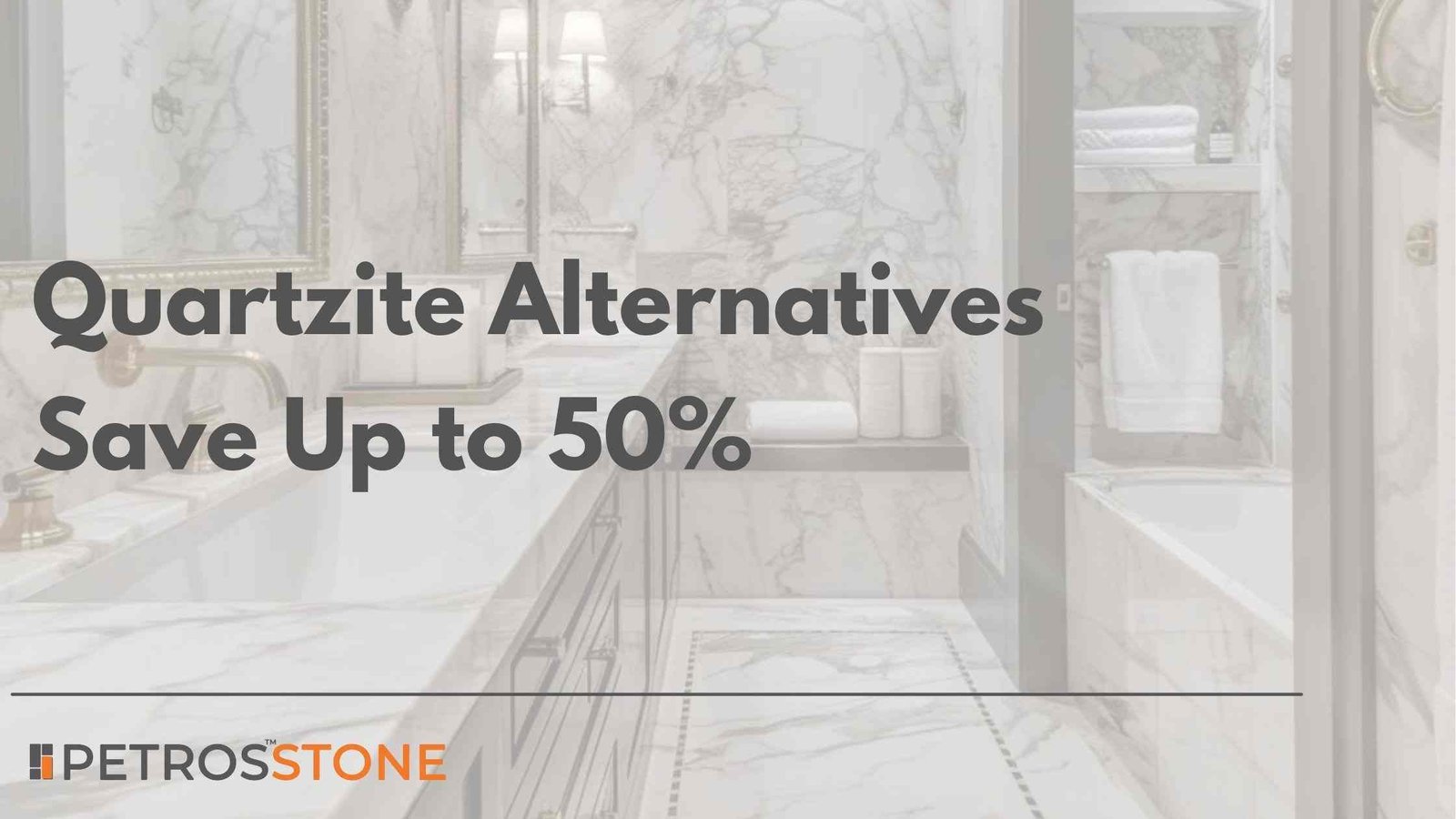
Quartzite is a durable stone that has become a favorite for countertops because it has the elegance of marble with the toughness of granite. With such qualities, it is ideally suited for kitchen applications, bathrooms, or high-traffic areas. However, this expensive material ($9 to $25 per sq. ft.) can also be very difficult to source at times.
The million-dollar question is: How do you get stone other than quartzite if you love its feel but the price puts you off? It feels good to know that there are some really awesome alternatives that provide an equally fantastic look and feel, along with the same durability and functionality.
Cost Comparison
| Material | Cost Range (per sq. ft.) |
| Engineered Quartz | USD 3 – 8.5 |
| Porcelain (Sintered Stone) | USD 2 – 2.5 |
| Granite | USD 0.50 – 3 |
| Marble | USD 6 – 18 |
| Soapstone | USD 7 – 15 |
| Laminate | USD 1 – 3 |
| Tile | USD 0.75 – 2.50 |
In this article, we have explored a range of alternatives to quartzite that offer similar beauty, durability, and functionality —often at a fraction of the cost. By comparing materials like engineered quartz, porcelain, granite, marble, and more, highlighting their pros, cons, typical applications, and updated pricing, we help you to make an informed choice.
What is Quartzite?
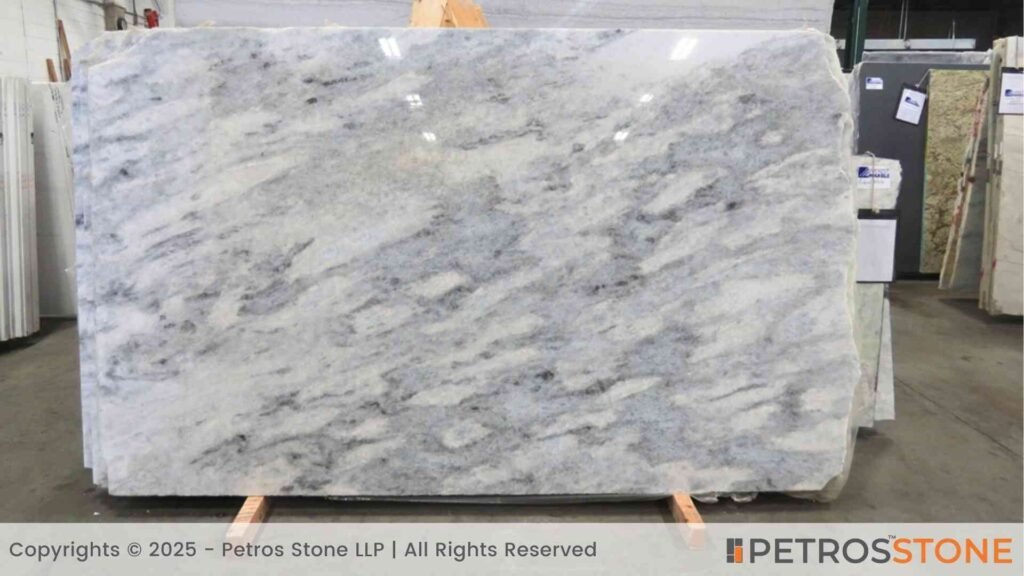
Imagine a surface that captures the elegance of marble, with bold, flowing veins and a glossy finish, but offers the strength to withstand everyday wear. That’s the beauty of quartzite.
Quartzite is a natural metamorphic rock formed when sandstone is subjected to intense heat and pressure over millions of years. This transformation results in a surface that’s dense, nonporous, and highly durable. It not only resists heat and scratches but also glows with a crystalline brilliance under the right lighting, making it a perfect blend of beauty and strength.
Characteristics of Quartzite
Nowadays, quartzite has become a popular choice in interior design, particularly for kitchen countertops, bathroom surfaces, and flooring. And, that’s for good reason. A few characteristics are mentioned below:
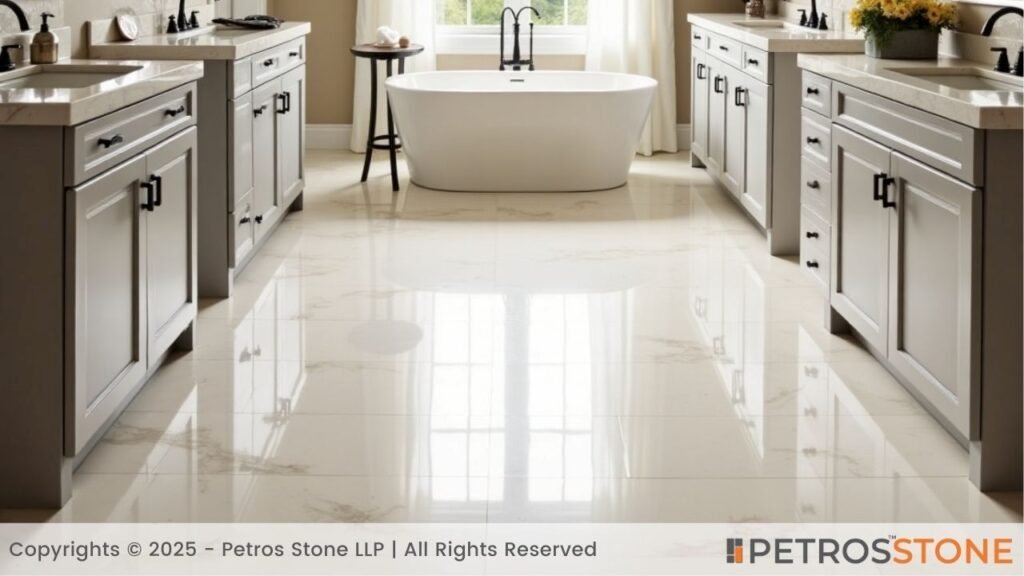
1. Highly Durable and Strong
Quartzite is quite durable because of its high hardness, greater than even granite in the Mohs scale. Thus, it is well resistant to scratches, chips, and damage resulting from everyday use. And, this kind of material is well-suited for countertops in places where wear and tear would otherwise be an issue.
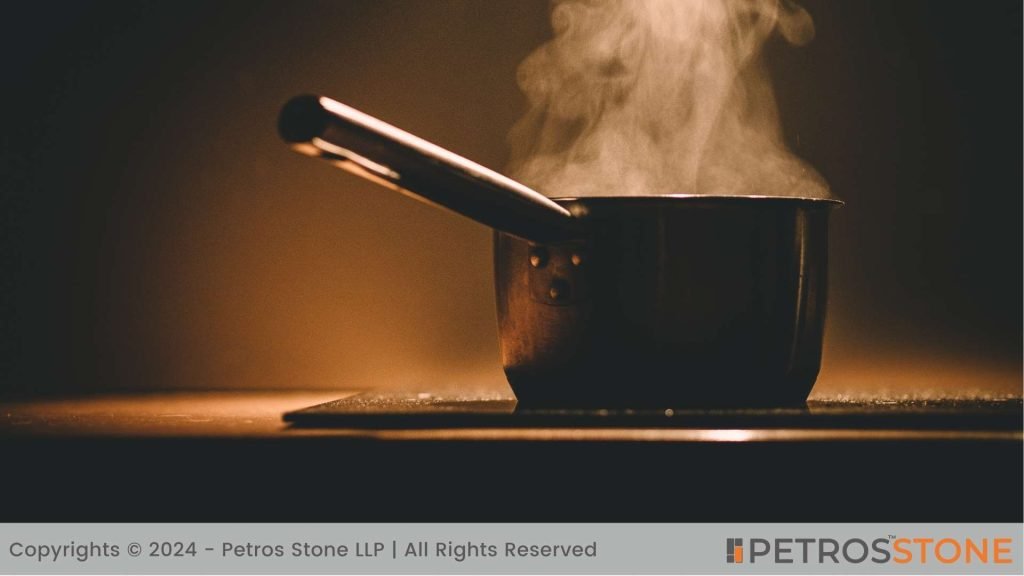
2. Excellent Heat Resistance
One of the best features of quartzite is its natural heat resistance. Whereas some artificial stones or soft materials tend to get damaged when exposed to extreme temperatures from hot pots, pans, and hair tools, quartzites do not.

3. Water and Stain Resistant (When appropriately sealed)
While quartzite is not as porous as many natural stones, one should still seal it every year or so. Such sealing greatly increases its resistance to water, oil, and paint stains and protects the stone surface while appreciating in looks. Such resistance to stains and moisture well equips quartzite for use in moist places, provided that sealing and maintenance are consistently done.
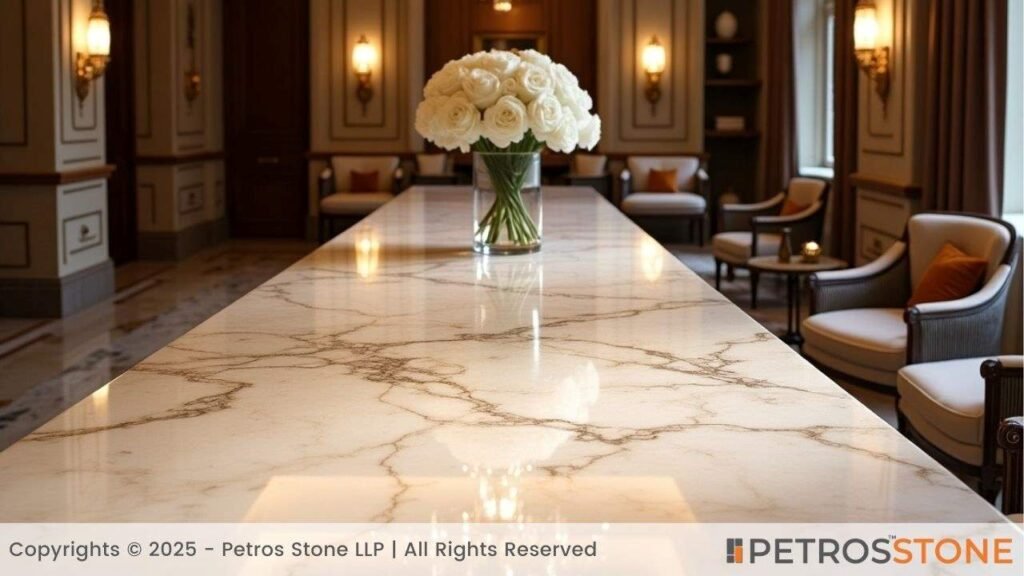
4. Naturally Stunning Aesthetic
Quartzite is an elegant and beautiful stone, often showing minimal veins, a gentle gradation of color, and organic lines. It comes mostly in the colors of white, gray, and beige, with some varieties showing slight tinges of pink, green, gold, or blue. Being natural stone, no two slabs are alike, bringing an absolutely one-of-a-kind touch to any space.
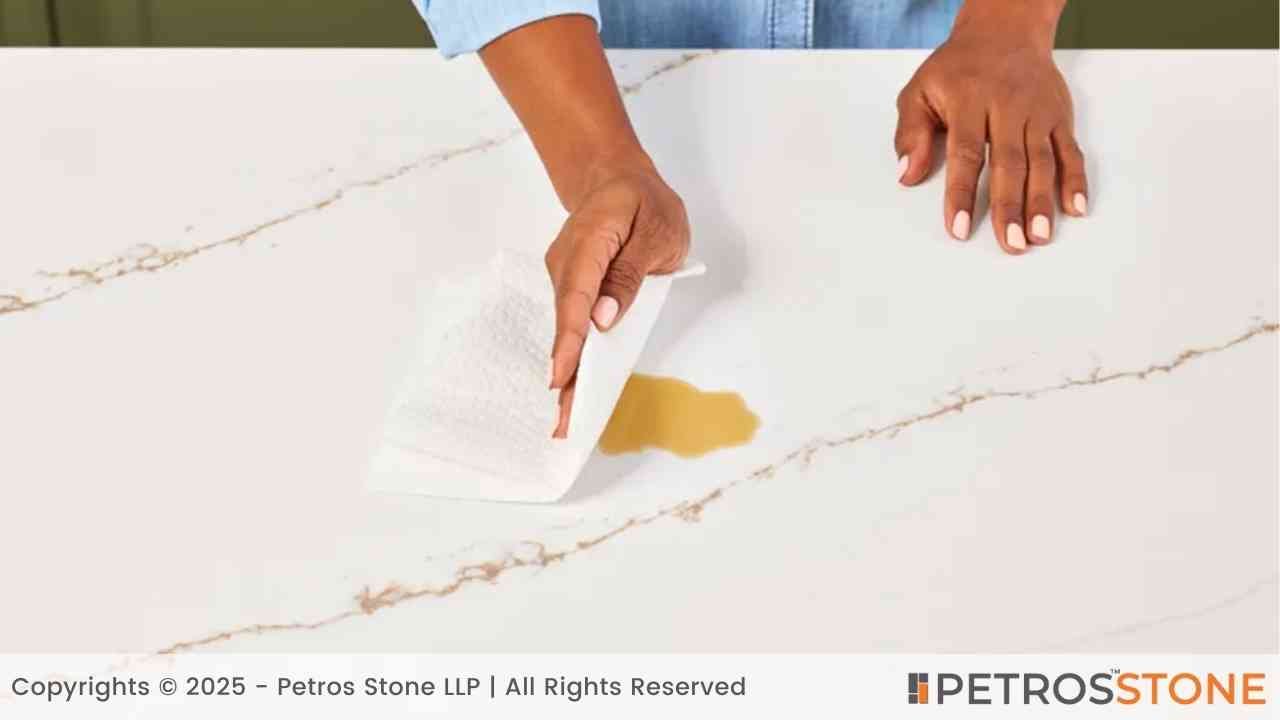
5. Cleaning and Maintenance
Quartzite is easy to clean. Typically, it will suffice to clean quartzite with just a soft cloth and a mildly pH-balanced cleaning agent. With time, a sealant can be damaged by harsh chemicals and acidic substances, lemon juice being a good example.
Major Applications
- Decorative furnishings
- Flooring and wall cladding
- Countertops
- Roofing Tiles
- Fireplace Surrounds
- Pathways
- Pool Surrounds
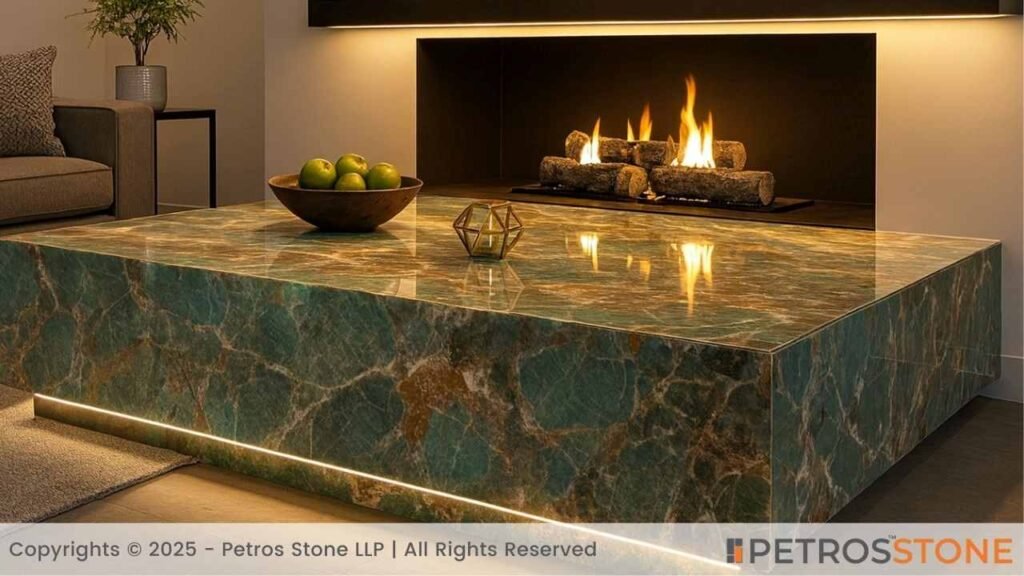
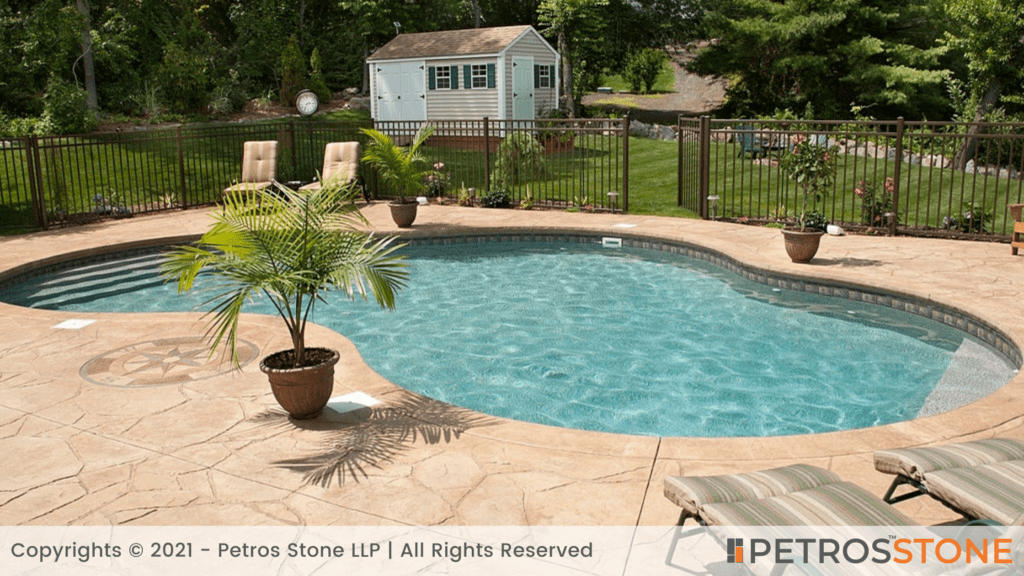
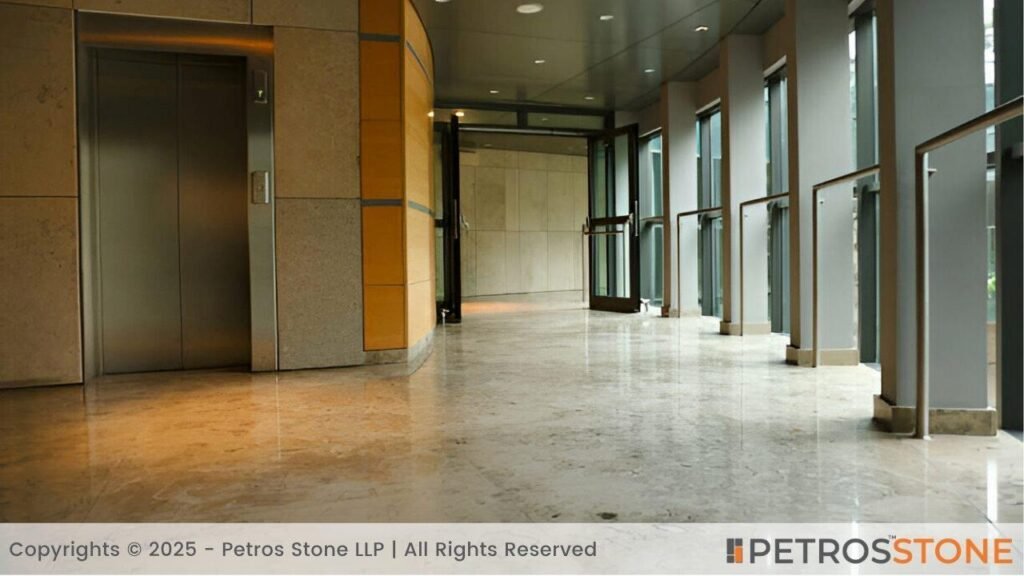
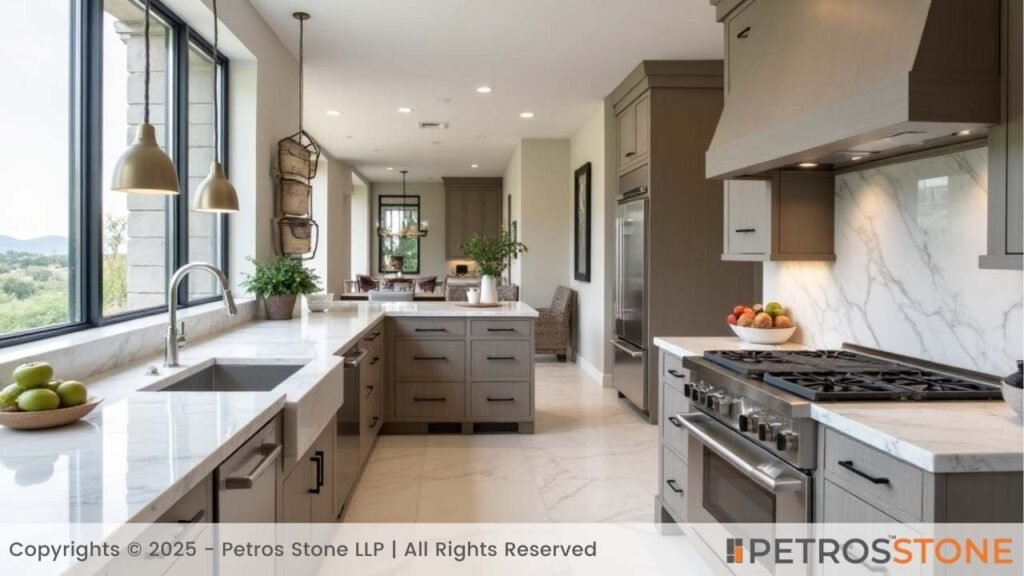
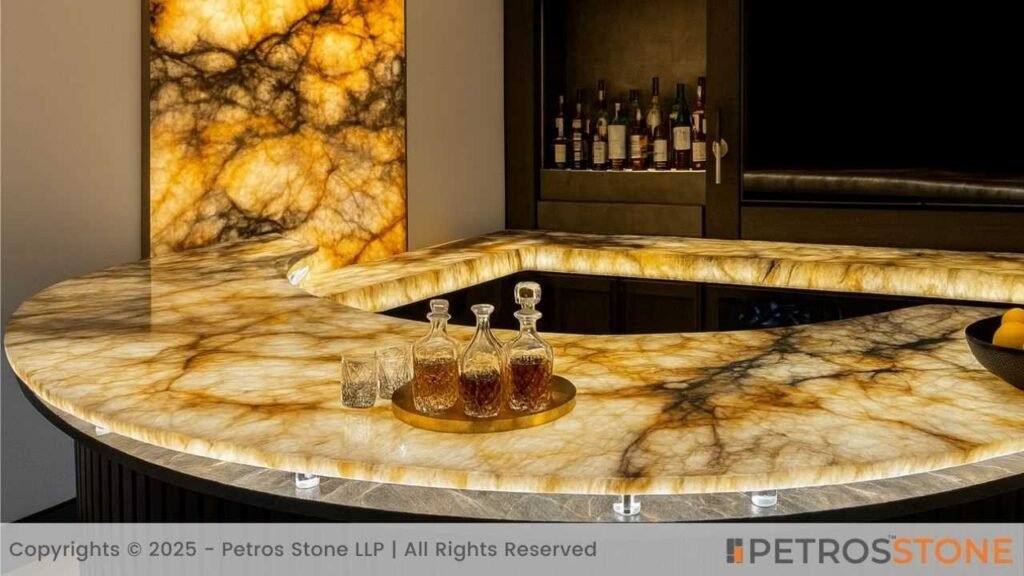
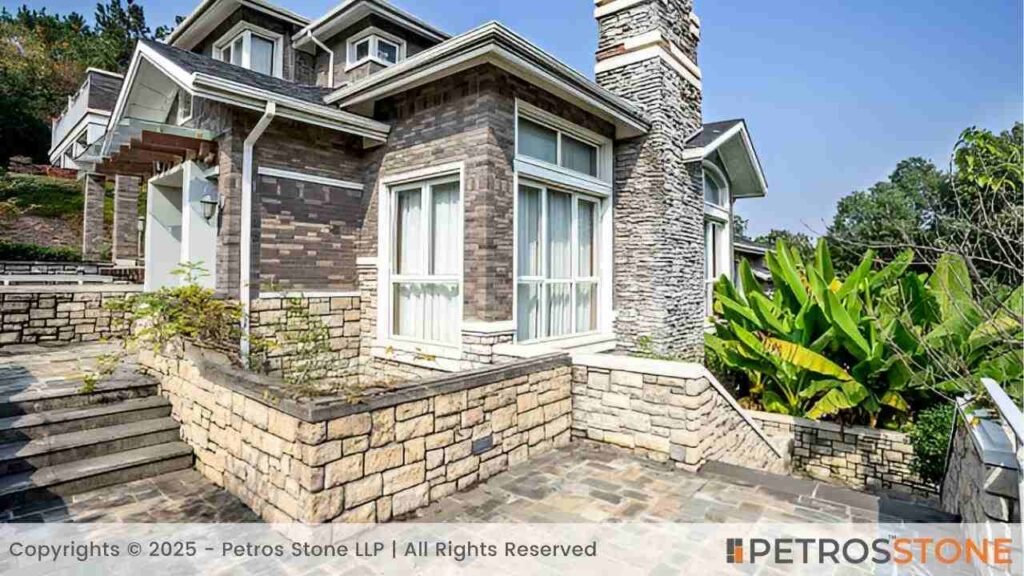
Why Seek Alternatives?
After checking out the features, you might feel like buying it. But here’s the catch: quartzite is often budget-breaking. That’s why we are here, chatting about alternatives that capture some of its spirit without emptying your wallet.
On top of cost, quartzite’s rarity in some markets can make sourcing it a head-scratcher, and transportation or disposal of remnants can add unexpected expenses. Plus, some homeowners simply prefer a material that’s easier to repair, with a broader range of colors, or even lighter on environmental impact.
List of Quartzite Alternatives with Uses and Characteristics
1. Engineered Quartz
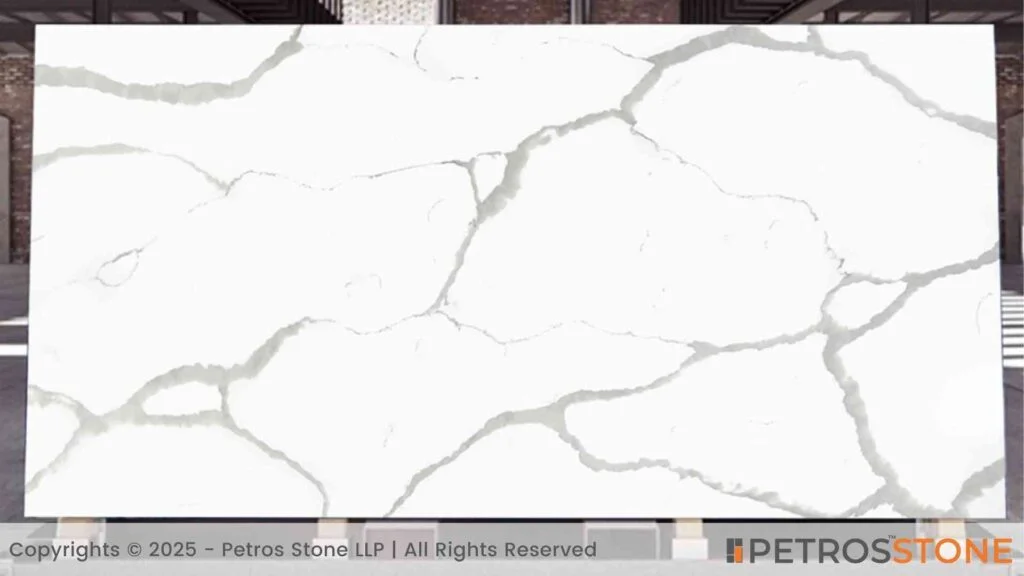
Artificial quartz or engineered quartz is a composite material with natural quartz crystals bound together by resin and pigments. Its look can be kept uniform with predictable patterns, granting it a wide selection of colors. Its reputation for resisting stains and scratches earned it the nickname of a countertop for busy households. And because it is non-porous, it can be cleaned with soap and water.
Key Attributes
| Pros | Cons | Uses |
| Consistent color and pattern | Not as heat-resistant | Modern kitchens |
| Stain and scratch resistant | Can look less natural | Bathrooms |
| No sealing required | Price can be high for premium brands | Laundry rooms |
| Easy to clean | Resin may discolor over time near heat | High-traffic counters |
2. Porcelain (Sintered Stone)

Porcelain slabs (also known as sintered stone) are ultra-thin as well as high-performance surfaces. They are produced at extremely high temperatures by firing an extremely fine powder. They resist scratches and stains, resist the direct application of heat, and require hardly any maintenance owing to their non-porous nature. The downside lies in mounting them, a procedure almost impossible to do by oneself, as the slabs are thin and brittle.
Key Attributes
| Pros | Cons | Uses |
| Extremely durable and heat-resistant | Can be fragile during installation | Bathroom vanities |
| Non-porous and hygienic | More expensive to ship | Outdoor kitchens |
| UV and moisture resistant | Fewer edge profile options | Modern kitchens |
| Realistic marble look | Requires professional installers | Wall cladding & showers |
3. Granite
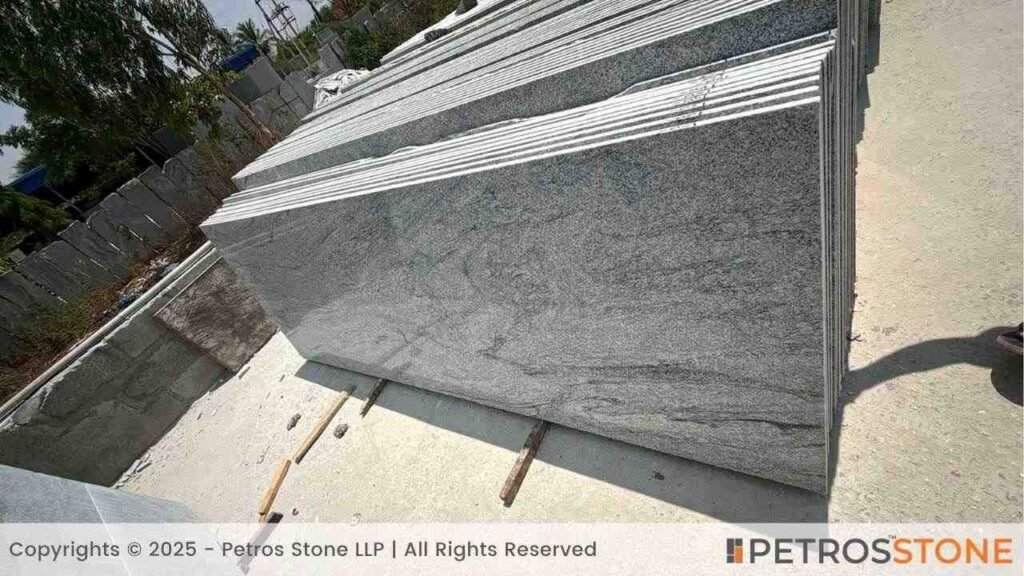
Granite is a natural stone formed deep within the earth from cooled magma. It is extremely durable, resistant to heat and scratches, and comes in a wide range of colors and patterns. No two slabs are alike. Plus, `Granite needs to be resealed every so often to keep it from staining, but otherwise stands up well to daily use. It’s one of the most trusted choices for kitchens worldwide.
Key Attributes
| Pros | Cons | Uses |
| Very durable and heat-resistant | Needs periodic sealing | Kitchen countertops |
| Unique patterns in each slab | Can be heavy | Fireplace surrounds |
| Scratch and impact-resistant | Not uniform in appearance | Outdoor kitchens |
| Widely available and cost-effective | May need support for large overhangs | Bathroom counters |
4. Marble
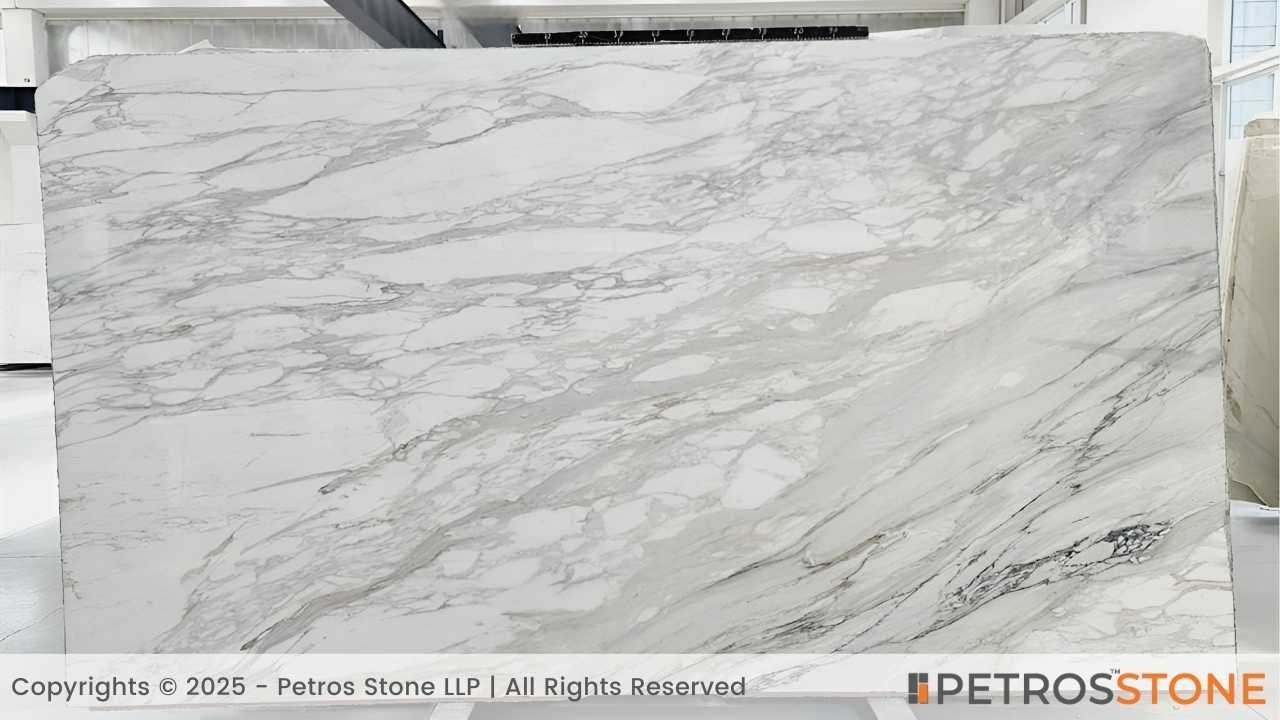
Marble is quintessential, with a rich and soft vein pattern. Prestigious white marbles, e.g., Carrara and Calacatta, are judged amongst the best. In terms of beauty, translucency is marked for most of them. But because of a softer and more porous nature, marble can very well get scratched, stained, and etched.
Key Attributes
| Pros | Cons | Uses |
| Elegant and timeless aesthetic | Prone to scratching and etching | Bathrooms and powder rooms |
| Adds property value and luxury | Needs regular sealing | Backsplashes |
| Natural beauty and uniqueness | Can stain with acids and oils | Fireplace surrounds |
| Cooler to the touch | Not ideal for heavy-use kitchens | Decorative surfaces |
5. Soapstone
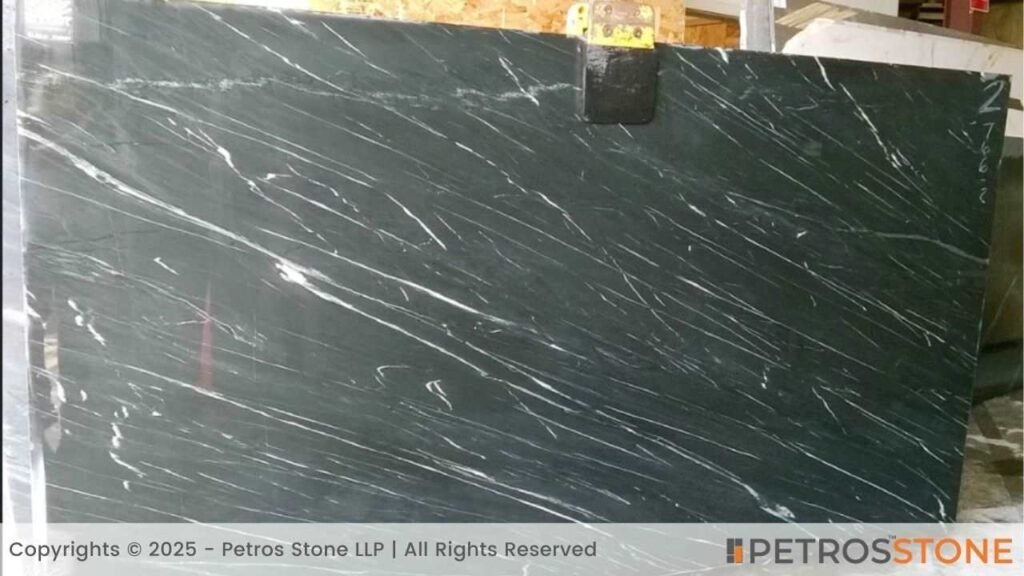
Soapstone is a natural stone known for its soft, matte finish and richer-than-dark tones that deepen with age. Also, soapstone is naturally non-porous, heat-resistant, and impervious to acid and chemicals. Being softer compared to quartzite or granite mostly means easier to scratch. Design-wise, soapstone is suitable for rustic, traditional, or industrial kitchens.
Key Attributes
| Pros | Cons | Uses |
| Beautiful patina over time | Can scratch and dent | Farmhouse kitchens |
| Heat and chemical resistant | Limited color options (mostly dark) | Fireplace hearths |
| No sealing needed | Not ideal for those wanting a pristine look | Islands and prep areas |
| Soft texture | Softer than other stones | Lab counters, rustic kitchens |
6. Laminate
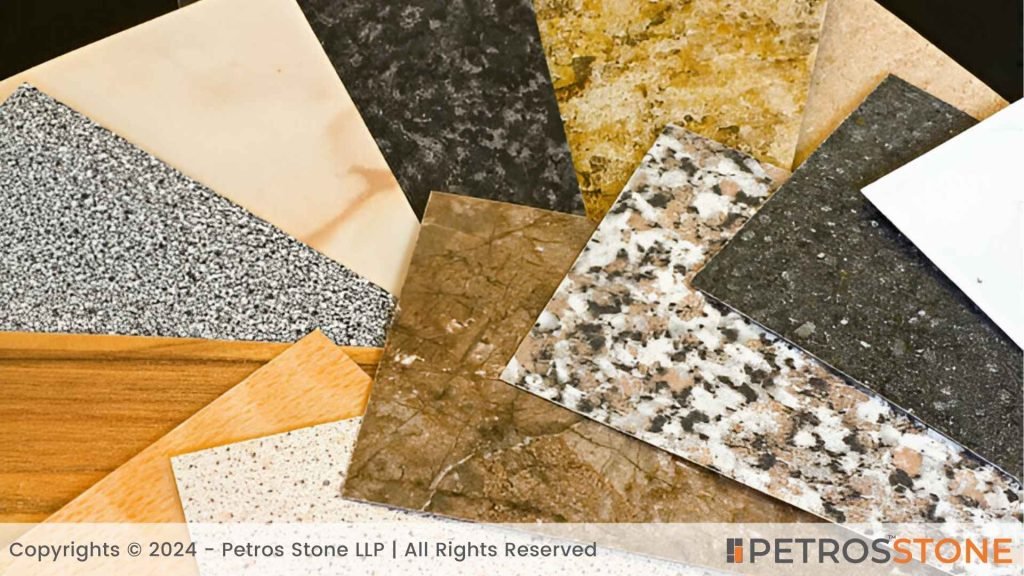
Laminate countertops are layers of plastic bonded onto particleboard. Whereas they once were considered outdated, new laminates offer an excellent resemblance to natural stone, wood, or concrete and are available in limitless styles and finishes. The material is budget-friendly, light, and easy to install. Also, it is heat- and scratch-resistant; however, over time, the seams can become more visible.
Key Attributes
| Pros | Cons | Uses |
| Very affordable | Can be damaged by heat or cuts | Rental units |
| Easy to install and replace | Not as durable as stone | Playrooms or basements |
| Huge range of colors and styles | Shorter lifespan | Budget remodels |
| Low maintenance | Not suitable for high-end kitchens | Temporary kitchens |
7. Tiles

Tile can offer you a varied selection of designs and is fairly DIY-friendly for countertops; ceramic and porcelain tiles come from here. You can mix colors, sizes, and patterns for a personalized look. Tile heat resistance and affordability are a plus point, but the grout lines require some maintenance. However, they also cease to feel sleek as compared to solid slabs.
Key Attributes
| Pros | Cons | Uses |
| Customizable design options | Grout can stain or crack | Retro or creative kitchens |
| Heat-resistant | Uneven surface for cutting or prep | DIY projects |
| Easy to replace damaged sections | Less sleek than slab surfaces | Outdoor bars, islands |
| Affordable | More maintenance than slabs | Backsplashes or accent counters |
Cost Comparison
| Material | Cost Range (per sq. ft.) |
| Engineered Quartz | USD 3 – 8.5 |
| Porcelain (Sintered Stone) | USD 2.5 – 7.5 |
| Granite | USD 0.50 – 6 |
| Marble | USD 6 – 18 |
| Soapstone | USD 7 – 15 |
| Laminate | USD 1 – 3 |
| Tile | USD 0.75 – 2.50 |
Choosing What’s Right for You!
Ask yourself some questions: How much time will you spend caring for this surface? Do you need it for kids, pets, or daily chaos? And finally, how much are you comfortable investing right now? Balancing these factors will point you toward your ideal material.
However, the best countertop is personal and situation-based. So, let’s highlight a few points you must consider before making any payments:
- Maintenance
- Durability
- Look and Appearance
- Budget
Where to Buy?
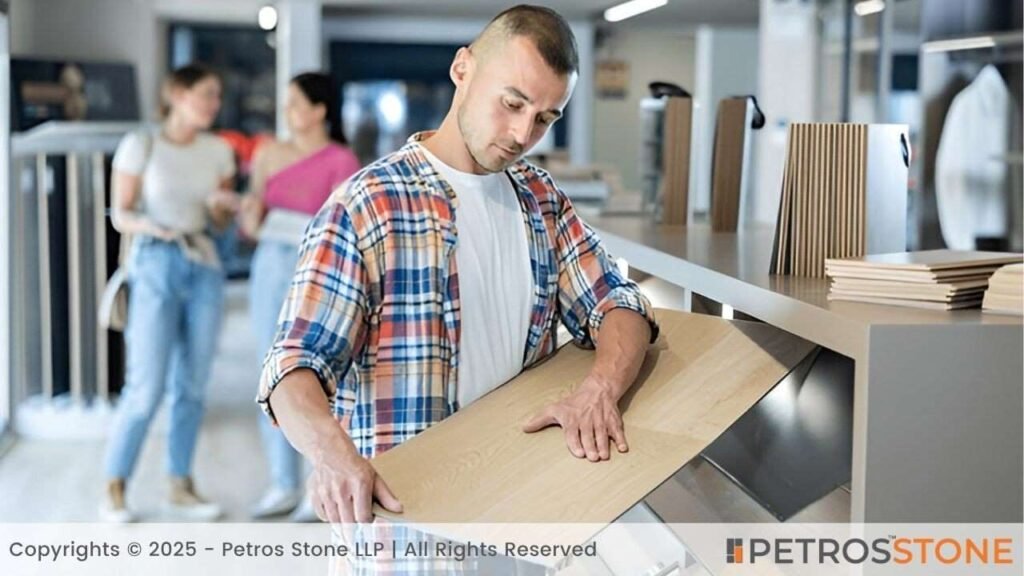
Searching for a place to get these materials for your projects? Well, you can begin by searching local stone yards and showrooms, as they quite often have slabs so you can actually see and touch them (this matters). When it comes to porcelain and curated designs, countertop or tile specialists may have unique patterns to offer. Oh, and do not forget to consider online shops! If you can work with smaller pieces there you can get high-end slabs for a fraction of the cost.
Still couldn’t get your favorite one? You can import them from India and the USA. Additionally, Petros Stone is worth checking out. They offer a wide variety of stones with modern looks & appealing patterns, so you might find the perfect fit for your space there.
NOTE: And always check the cost of installation, too. A cheap slab will also cost more if it is hard to install or if installation requires a ton of muscle.
FAQs
What’s better than quartzite?
Engineered quartz or porcelain might be a better option depending on desired durability and level of maintenance. On the other hand, granite or soapstone offers a natural look at a lesser price. In short, substance and style set the price tag of quartzite.
Is quartz cheaper than quartzite?
In general, quartz tends to be cheaper than natural quartzite. Plus quartz usually offers similar looks but with less care.
What is the least expensive quartzite?
Usually, the less expensive ones tend to be domestic stones with a fairly simple pattern (basic prints in clean white, soft grays, subtle beige, etc.).
What type of countertop is more affordable than quartzite?
Laminate and tile, hands down. Both can mimic stone look and remain light on the budget while giving excellent return on value-especially if the use is temporary or merely under a tight budget.
Summary
So here’s where we’re at: quartzite is beautiful and durable, but not always budget-friendly or easy to source. Thankfully, some very good and reputable alternatives exist-engineered quartz, porcelain, granite, marble, soapstone, laminate, and tile. Each has many characteristics to offer and is considerate of the wallet. Depending on your maintenance, appearance, or value priority, one of these materials may give you what you want, while others may surprise you with how well they work.
Key Takeaways
- Quartzite is a beautiful and durable stone, but it can be expensive and hard to source.
- Quartzite’s average cost is $9 to $25 per square foot.
- Quartzite alternatives include engineered quartz, Porcelain, Granite, Marble, Soapstone, Laminate, and tile.
- You need to consider budget, functionality, and durability before buying these slabs.
Feel free to get in touch for a free consultation, quote, and get a detailed understanding from our experts here at Petros®. Visit https://petrosstone.com/ or call +91-8446360361 and WhatsApp

Hello!
I’m Varsha, with a deep interest in architecture and years of content writing experience, I explore how natural stones like granite and marble shape beautiful, functional spaces. At Petros® Stone, I share insights that help readers appreciate the design potential and timeless appeal of stone.
Brown Granite
White Galaxy Granite
Blue Bahia Granite
Silver Cloud Granite
Black Pearl Granite
Dallas White Granite


